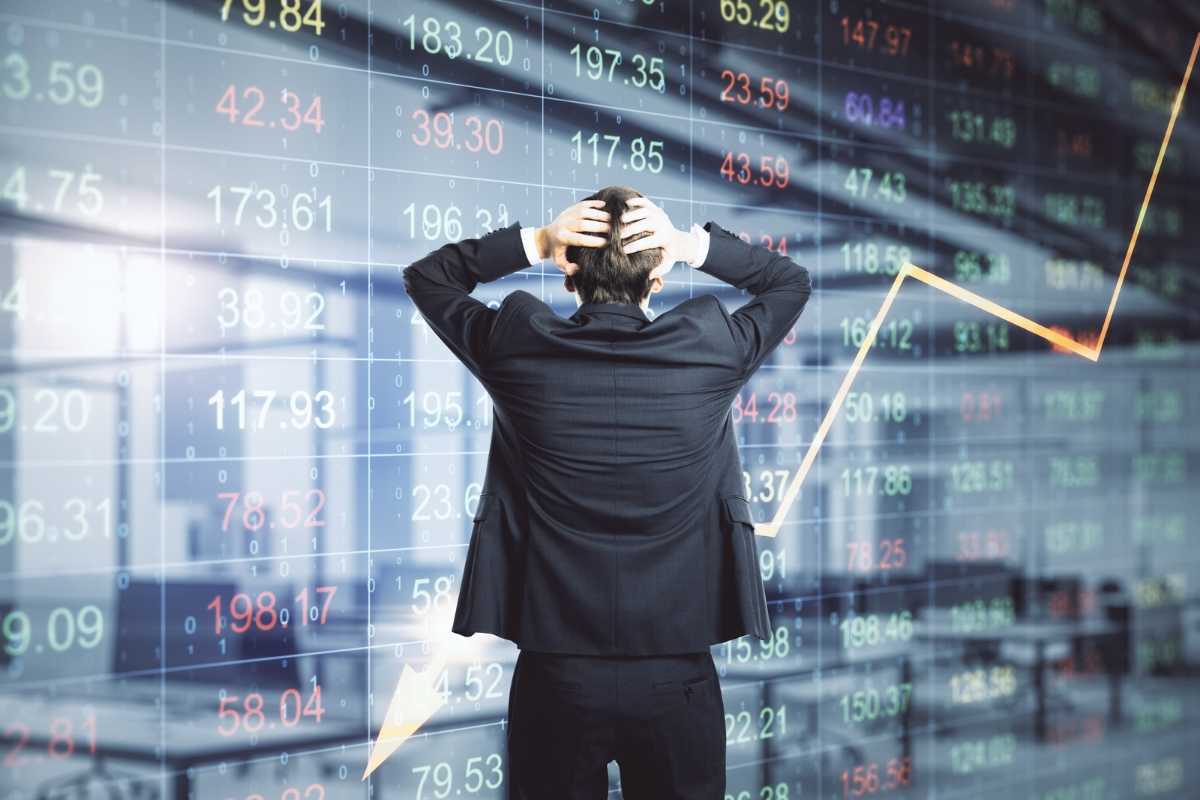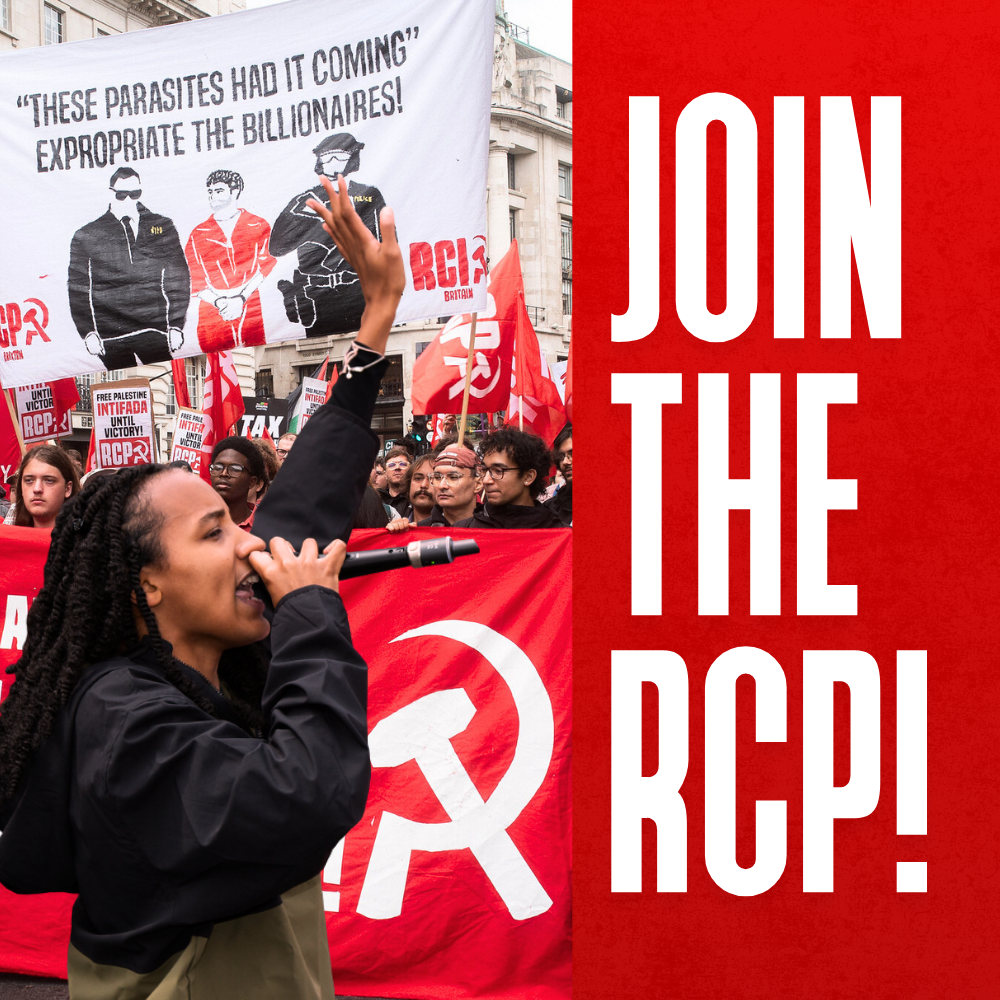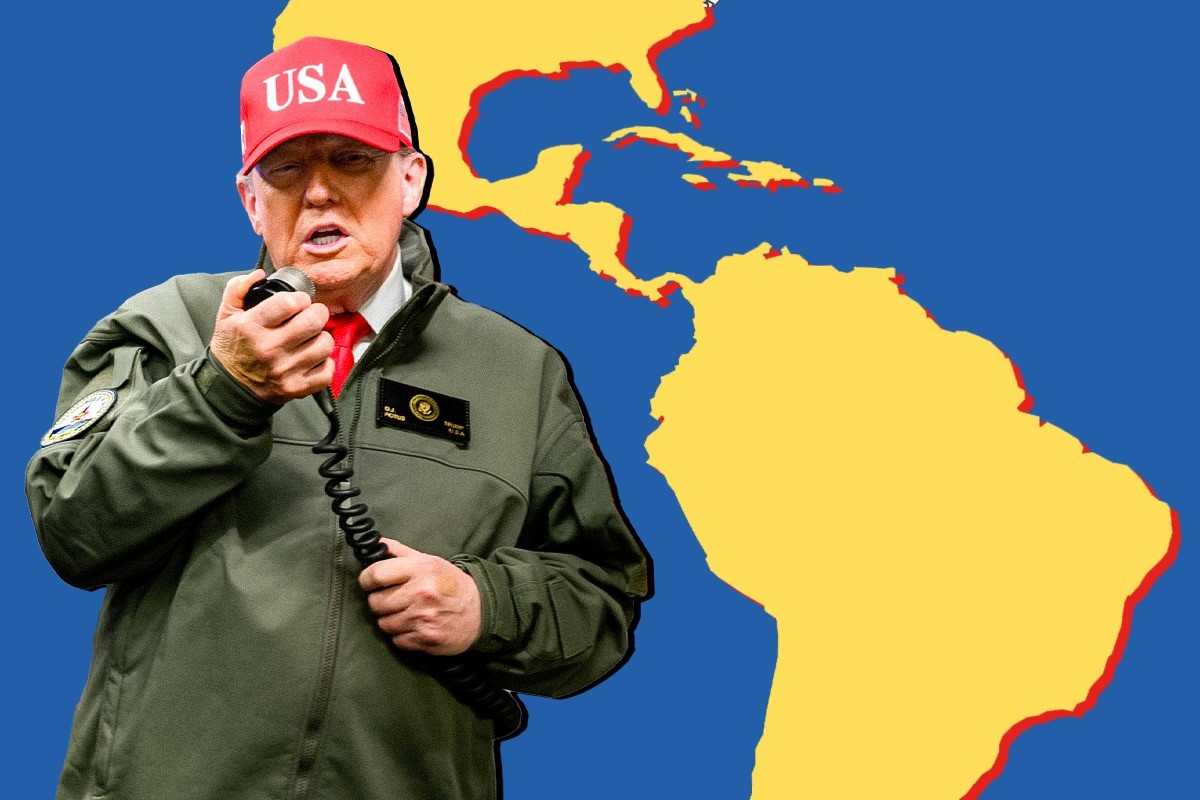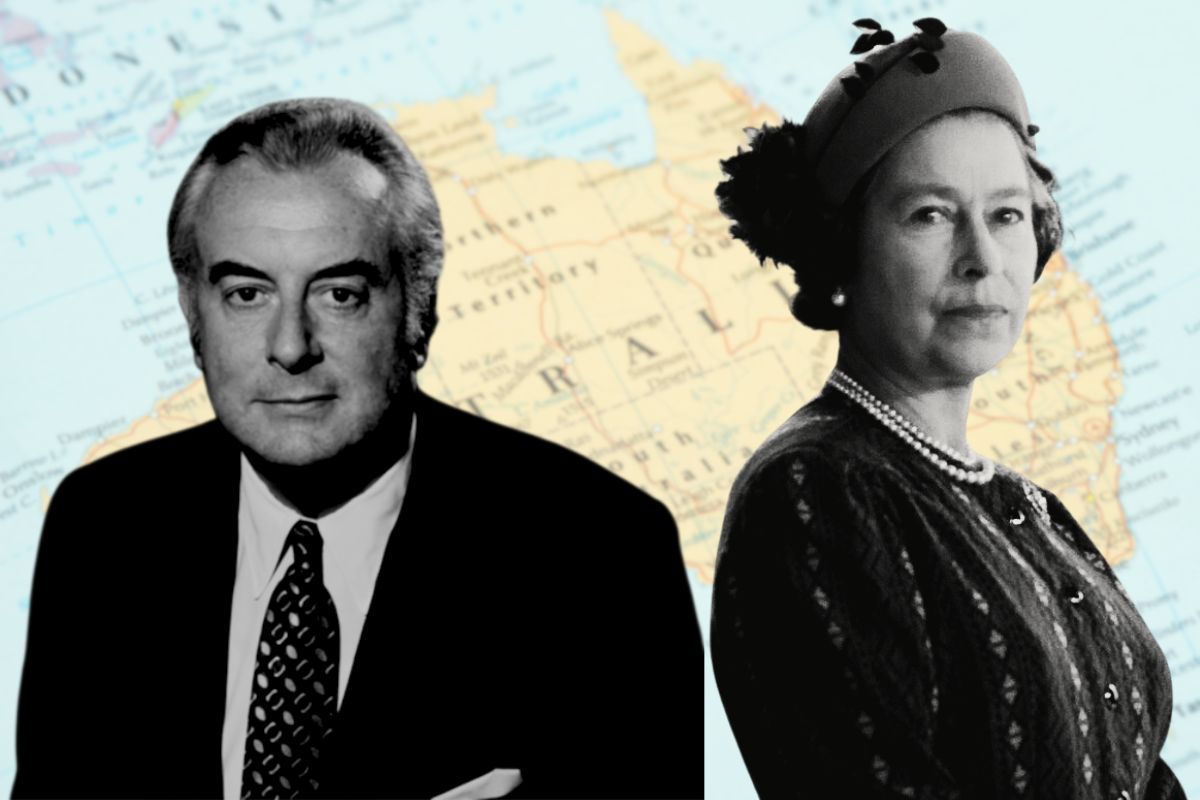A decade on since the financial crisis, the world situation is characterised by instability at every level. How do we make sense of this chaos?
We present here part one of the International Marxist Tendency’s 2018 perspectives for world revolution. This constitutes the Marxists’ analysis of the current situation in world politics, and predictions about where we are headed.
This draft document will be discussed and finalised at the IMT’s 2018 World Congress, set to take place this summer. It was originally written at the beginning of this year. Although some of the events described have moved on since, these developments only further confirm our overarching assessment of the world situation.
In this first part, we look at the global economic situation, which has not seen any significant improvement in the 10 years since the 2008 crisis. The economic instability, in turn, has generated enormous instability politically, with tensions increasing between the main imperialist powers. This is the main reason for the increasing concern about the possibility of a trade war and a Third World War.
Ten years after the crash
Ten years have passed since the financial crash of 2008. This was one of those defining moments in world history that mark a fundamental change in the situation, like 1914, 1917, 1929 and 1939-45. It is therefore an appropriate moment to draw a balance sheet of the past decade.
This crisis was qualitatively different from any other in the past. It was not a normal cyclical crisis, but a reflection of the organic crisis of capitalism. A decade after the collapse of 2008, the bourgeoisie is still struggling to extricate itself from the crisis that destroyed the equilibrium of the capitalist system. To the very limited degree that one can speak of a recovery, it is a very partial one. In fact, it is the weakest economic recovery in history. Even in the 1930s there was a bigger recovery. And certain things flow from this.
Ten years ago, we predicted that all of the attempts of the bourgeoisie to restore the economic equilibrium would destroy the political and social equilibrium. That has now been confirmed by events on a world scale. In one country after another the attempts of governments to impose austerity in a desperate effort to get the economy moving (which they have failed to do) have prepared social explosions of an absolutely unprecedented character.
“Concentrated economics”
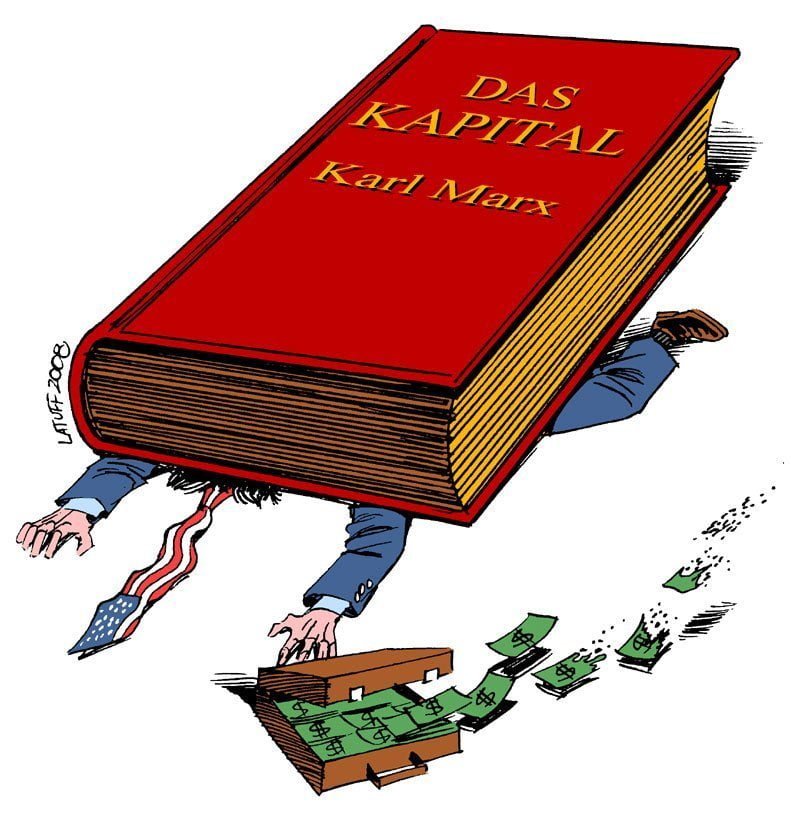 Lenin said politics is concentrated economics. In the last analysis, all these crises are an expression of the impasse of capitalism which is no longer capable of developing the productive forces as it did in the past. This does not mean, of course, that there can no longer be any development of the productive forces.
Lenin said politics is concentrated economics. In the last analysis, all these crises are an expression of the impasse of capitalism which is no longer capable of developing the productive forces as it did in the past. This does not mean, of course, that there can no longer be any development of the productive forces.
Neither Marx nor Lenin or Trotsky have ever said that there was an absolute ceiling on the development of the productive forces under capitalism. It is a relative, not an absolute phenomenon. There can always be some development, as there has been in China in the last period. But on a world scale there is nothing compared to the development of the productive forces in the second half of the 20th century after the Second World War.
Marxism explains that the secret to the viability of any economic system is the achievement of the maximum economy of labour time. One of the most important elements in the development of capitalism was precisely the growth in the productivity of labour. For 200 years, capitalism raised the productivity of human labour power to a level undreamt of in the past. But this progress is now reaching its limits.
A study on productivity by the Center for Economic and Policy Research in September 2015 found that, between 2007 and 2012, global productivity grew at annual rate of 0.5%; half what it had been in the period 1996-2006. However, in the more recent period of 2012-14 it had ground to a complete halt at zero percent. In countries like Brazil and Mexico it was actually negative. As the report states, “This is one of the most disturbing and, no doubt, important phenomena affecting the world economy.”
These figures are a sure indication that capitalism now finds itself in a systemic crisis. The sluggish growth of the productivity of labour – and in some cases its fall – is a striking symptom of the impasse of capitalism, which is no longer able to achieve the big successes of the past.
The source of the problem lies in historically low levels of investment: gross capital formation in the European Union and the United States has fallen below 20% of GDP for the first time since the 1960s, while capital consumption and depreciation is rising. In the former colonial world, the boom in raw material prices sparked a brief increase in investment, but it has fallen again over the past few years.
This failure to invest in production is not the result of the lack of money. On the contrary, the giant corporations are swimming in cash. Adam Davidson, writing in The New York Times in January 2016, stated that, “American businesses currently have $1.9 trillion in cash, just sitting around”… this “state of affairs [is] unparalleled in economic history…” The author of the article considers this a “mystery” but what it shows is that the capitalists do not have profitable fields of investment in the present state of the world economy. (Why Are Corporations Hoarding Trillions? New York Times, January 20, 2016)
More recent data by the US Federal Reserve puts the amount of “non-financial companies’ liquid assets, which include hard currency, foreign deposits, money-market and mutual-fund shares” at a “record $2.4 trillion in the third quarter” of 2017.
The system is literally drowning in a surfeit of wealth. It is like the sorcerer’s apprentice who has conjured up forces that he cannot control. The productive forces have the potential to produce a mass of commodities that cannot be absorbed by the markets.
This inability to make productive use of the colossal amounts of surplus value extracted from the sweat and blood of the workers is the final condemnation of capitalism. Overproduction is reflected in a general crisis of the world economy, which is in a very fragile state. Cheap credit no longer serves to stimulate investment. What is the point in investing to create new productive forces when there are no markets for the existing production?
A new recovery?
Every day the press proclaims a recovery. In the best case, there is a slight upturn in GDP within a generalised context of long term stagnation. For Marxists there is no surprise in this; even in periods of decline the system continues to move in cycles and after a long period of decline or stagnation a small recovery is to be expected. However, it is of such a weak nature that it amounts to no substantial recovery and will not last.
The limited growth comes against a background of ultra-loose monetary policy. The Federal Reserve kept the base rate at just above zero from the autumn of 2008 until the beginning of 2017. The European Central Bank also lowered their rate to just above zero.
Real estate bubbles exist in housing markets in Britain, Canada, China and Scandinavia. The stock markets have not merely recovered but have exceeded their 2007 valuations. The Dow Jones has managed to not only exceed, but increase its valuation by 36%. The price over earnings ratio (that is, the price an investor is paying for $1 of a company’s earnings or profit) has reached its third highest peak in history (the previous two being 1929 and 2000). All this is indicative, not of a healthy recovery, but of another crisis in the making. It also has the effect of transferring huge amounts of money to the capitalist class whose assets have increased in value with the influx of new credit.
The limits of credit
 The reason for the present impasse is that, in the decades prior to 2008, capitalism not only reached its limits but went far beyond its “natural” limits. The unprecedented expansion of credit and debt is partly what enabled capitalism to overcome the constraints of the market and overproduction. On the other hand, there was the enormous expansion of world trade and an intensification of the international division of labour.
The reason for the present impasse is that, in the decades prior to 2008, capitalism not only reached its limits but went far beyond its “natural” limits. The unprecedented expansion of credit and debt is partly what enabled capitalism to overcome the constraints of the market and overproduction. On the other hand, there was the enormous expansion of world trade and an intensification of the international division of labour.
Marx explained that one of the ways capitalism gets around the limits of the market and the tendency for the rate of profit to fall is through the massive expansion of credit and of increasing world trade (“globalisation”), which partially, and for a limited period of a few decades, enabled it to get around the other key contradiction: the limitations of the nation state. But both of these solutions have limited effects and have now turned into their opposite.
Historically, the US has had a total debt (government and private) of around 100-180% of GDP. However, in the late 1980s total debt reached 200%, and it continued to grow until 2009, reaching a peak of around 300%. Japan, Britain, Spain, France, Italy and South Korea all have debt levels in excess of 300%. World debt now stands at $217tn or 327% of GDP, the highest in history.
Marx pointed out in The Communist Manifesto that the bourgeoisie solves crises today only by paving the way for bigger crises in the future. What have they achieved over the past decade with all the pain, austerity and suffering? Their aim was to reduce the deficit and the huge unprecedented mountain of debt that had been built up as a result of the previous period.
All they have done is to convert what was a gigantic black hole in the private banks into a huge black hole in the public finances. The banks were standing on the brink of an abyss and they were only saved by the intervention of the state, which saved them by giving them trillions from the public purse. The problem is that the state does not have any money except what it can squeeze from the taxpayers.
The question is therefore: who pays? It is well known that the rich do not pay much in taxes. They have a thousand ways of avoiding that painful necessity. The working class must pay, the middle class must pay, the unemployed must pay, the sick must pay, the schools must pay. Everyone must pay except for the rich, who have become richer and richer even in this period of “austerity”.
Has all this solved anything? Seven out of the ten biggest economies in the world run annual government deficits in excess of 3% of GDP, and only Germany has less than a 2% deficit. Debt is rising everywhere. There is no way to get out of the crisis unless and until these debts have been wiped out one way or another. And how does one eliminate the public debt? Naturally you place the entire burden on the shoulders of the poorest and most vulnerable sections of society.
The scenario that we are witnessing internationally is really unprecedented. And we are speaking here only of the advanced capitalist countries. The situation in the so-called Third World is another matter. Here the picture is one of unrelieved misery, unimaginable suffering, starvation and degradation for billions of men, women and children.
The threat of protectionism
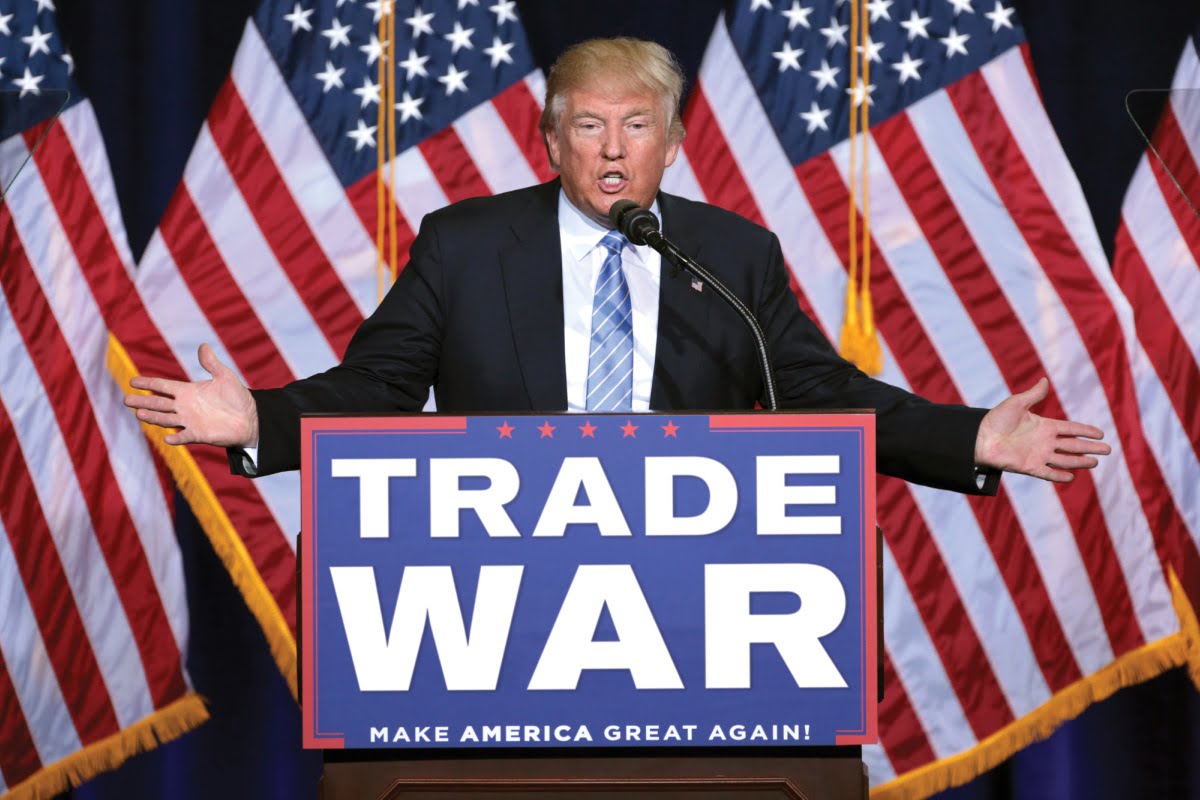 For decades, world trade grew much faster than production, providing the motor force for the growth of the world economy. However, in the recent period, the growth of world trade has slowed to a level lower than that of GDP. Global trade as a percentage of GDP peaked at 61% twice, in 2008 and 2011, but now it has fallen to 58%.
For decades, world trade grew much faster than production, providing the motor force for the growth of the world economy. However, in the recent period, the growth of world trade has slowed to a level lower than that of GDP. Global trade as a percentage of GDP peaked at 61% twice, in 2008 and 2011, but now it has fallen to 58%.
The World Trade Organisation has expressed concern that national governments may be tempted to defend their own markets with protectionist measures and that these would in turn impact negatively on trade growth. As if to confirm these fears, Donald Trump blunders onto the scene like an elephant in a china shop. His policy of “America first” is itself a reflection of the global crisis. He wishes to “make America great again” at the expense of the rest of the world. That is to say, he wishes to use America’s muscle to grab an increased share of world markets.
In the last few years the US capitalists have been struggling to put together a number of trade deals with Europe, America and Asia. The first thing Trump did was to tear up the TPP and the TTIP. He also threatens to destroy NAFTA if he cannot get a deal whereby Mexico and Canada sacrifice their interests for the benefit of the USA and he is threatening to paralyse the WTO by blocking the replacements of judges to its tribunals.
China has a huge trade surplus with the USA, a record-high $275.81 billion for 2017, and this is one of the main reasons that Trump complains that China is harming the US economy. During the election campaign Trump accused China of “raping America”, stealing US jobs, etc. Since then he was obliged to moderate his language in the hope of getting China to put pressure on North Korea. But that aim was not achieved and the contradictions between America and China remain unresolved. Here already is the outline of a future trade war between America and China.
He is not the only one pursuing this policy. Since the beginning of the crisis the advanced capitalist countries have been taking measures to increase their trade surpluses. This has partly been done by a number of protectionist moves. The US (under Obama) became the world leader in protectionism, but also the UK, Spain, Germany and France are more protectionist than China.
It must be remembered that it was protectionism that turned the crash of 1929 into the great Depression of the 1930s. If protectionism takes hold, it can cause the whole fragile structure of world trade to come crashing down, with the most serious consequences.
The USA – an unprecedented crisis
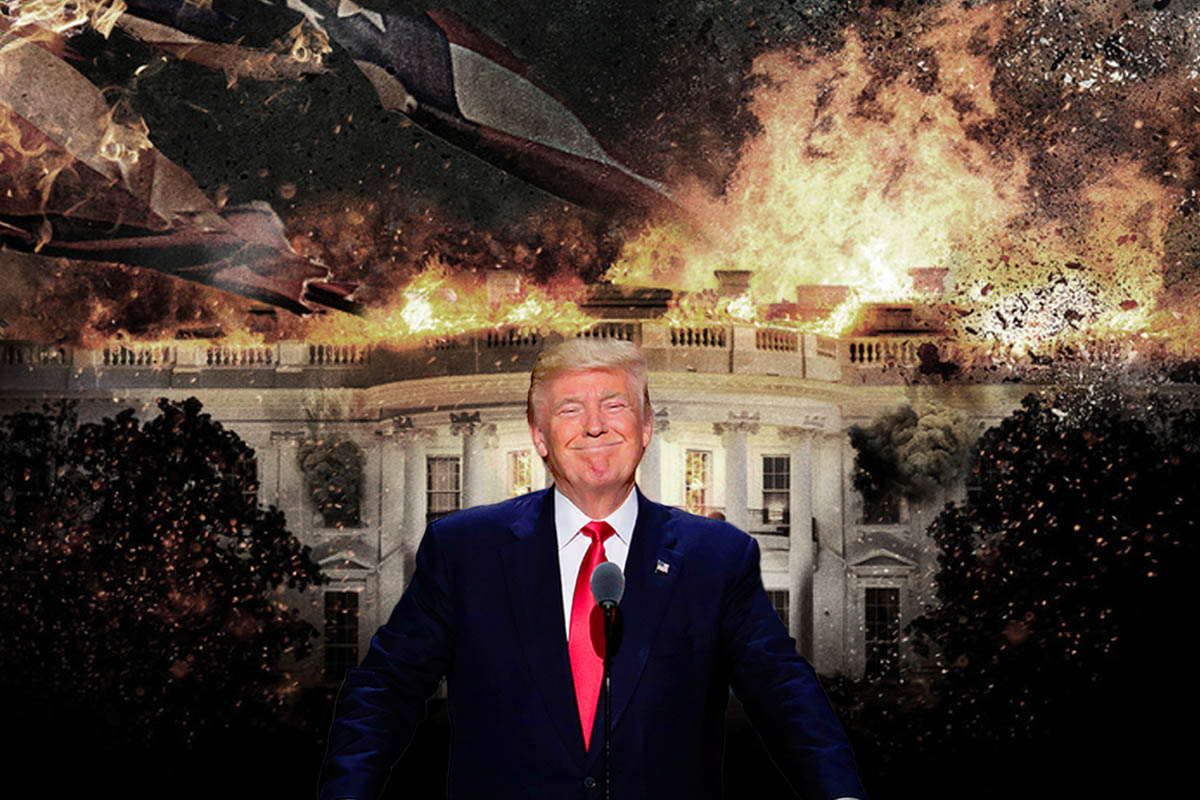 The relative weakening of the US since the Second World War is shown in the fact that in 1945 more than 50% of world GDP was produced in the United States, whereas now this figure is around 20%. When we refer to the relative weakening of US imperialism, we should not, however, exaggerate the process. By relative decline, we mean that it has been weakened and cannot play the same role it did in the past, as can be seen in the Syrian crisis. The US, nonetheless, remains by far the dominant superpower on a world scale and no other power is in a position to replace it, as the US replaced Britain in the past, for example.
The relative weakening of the US since the Second World War is shown in the fact that in 1945 more than 50% of world GDP was produced in the United States, whereas now this figure is around 20%. When we refer to the relative weakening of US imperialism, we should not, however, exaggerate the process. By relative decline, we mean that it has been weakened and cannot play the same role it did in the past, as can be seen in the Syrian crisis. The US, nonetheless, remains by far the dominant superpower on a world scale and no other power is in a position to replace it, as the US replaced Britain in the past, for example.
This relative decline has had an effect on both its ability to dominate the world economically, politically and diplomatically and on its ability to provide the workers of America with the standard of living that was behind the relative internal stability of the past. This reality has now seeped into the consciousness of the US masses.
The American dream is dead. It has been replaced by the American nightmare. The dream is finished and there is no way they can recover it. The change in consciousness in America was revealed in a peculiar way during the presidential elections of November 2016. For a hundred years, the stability of American capitalism was based on two parties: the Democrats and Republicans. These two parties alternated in office for all that time.
There is huge discontent and a burning desire for change. We already saw that in the vote for Obama, who demagogically promised a change. Millions of people who did not normally vote were queuing up to vote for a Black American President. They did so twice, but in the end there was no change. Thus a mood of anger, bitterness and frustration grew, particularly amongst the poorest sections.
This mood was clearly expressed in the campaign of Bernie Sanders. At first hardly anybody knew Bernie Sanders, whereas everybody knew Hillary Clinton. Yet when he talked about a political revolution against the billionaire class it struck a chord with many people, especially (but not only) the youth. There were mass meetings of tens of thousands to support Bernie Sanders. At least one study said that if Sanders had stood against Trump, he could have won. But inevitably he was manoeuvred out by the Democratic Party machine. Worse still, he accepted it, which caused a certain element of demoralisation among his supporters.
The ruling class likes to have people they can control, people like Hillary Clinton. They did not and do not want Trump because he is a maverick who suffers from an extreme case of egomania and is therefore difficult to control. Hillary Clinton is an agent of big business. Trump represents the same class but he has his own ideas as to how this should be done. During the election campaign he demagogically appealed to the workers. For the first time in recent memory, a presidential candidate referred to the working class (as did Bernie Sanders). That was unheard of. Even most of the left-wing liberals and trade union leaders always referred to the “middle class”.
The establishment was desperate to stop Trump. But they failed. The ruling class was against this demagogic interloper; the Democrats were against him of course, and the majority of the Republicans were also against him. All the media were against him. He even succeeded in alienating Fox News for a time. The media is without doubt a powerful instrument in the hands of the ruling class. And yet he won.
This was a political earthquake. But how does one explain it? Trump is a reactionary, but he is also a skilful demagogue who directed his appeals to the poor, alienated unemployed and workers in the rustbelt: offering them jobs, denouncing the existing state of affairs and the privileged Washington establishment. In this way he connected with the general mood of anger and discontent.
Bernie Sanders connected with the same mood. But he was predictably sabotaged by the Democratic Party machine. And when Sanders finally capitulated and called for support for Hillary Clinton, many saw Trump as the “lesser evil,” and he went on to win the election. Many people who would have voted for Sanders sat out the election or thought, “If we can’t vote for Sanders, we’ll vote for Trump”.
Trump’s campaign was marked by the galvanisation and mobilisation of a section of the electorate which was previously inert and achieved more absolute votes than any Republican candidate in history, though he won a lower overall percentage than Republican candidate Mitt Romney in 2012. However, his victory also exposed the opacity and undemocratic nature of the US Electoral College system, which worked to his advantage in spite of Trump winning almost three million votes fewer than Hillary Clinton.
The vast majority of the bourgeoisie was not happy about this unexpected turn in events. But neither, at first, were they unduly concerned. They have a thousand ways of controlling a difficult politician. Initially they tried to comfort themselves with the idea that what Trump said during the election campaign was just propaganda, and that he would behave rationally once he entered the White House (that is to say, he would take his orders from the ruling class). But they were mistaken. The man in the White House proved difficult to control.
The Democrats had a very simple explanation for Trump’s victory: they blamed the Russians, while Hillary Clinton also blamed Sanders. All that proves is that to this day the Democratic Party has not understood why Trump won the elections. They whipped up a campaign claiming that the Russians were responsible for hacking, which, they claim, decided the result of the election.
The allegation of Russian involvement in the hacking of documents may or may not be true. But many countries, and not least the USA, are constantly hacking, phone tapping and meddling in the internal affairs of other nations – including their “allies”, as Angela Merkel found out. But to argue that the Kremlin determined the votes of millions of US citizens is childish in the extreme.
What is unprecedented is that an American president should find himself in an open public confrontation with the FBI and the whole of the American intelligence agencies. The secret services are precisely supposed to be secret, and they are at the heart of the bourgeois state. For those agencies to be clashing publicly with the president, openly trying to undermine him and drive him from office – such a thing is absolutely unheard of. And amidst all the thunder and lightning, everyone has now forgotten what was in the hacked emails. And nobody bothers to ask if their contents were in fact true.
In reality, the damning accusations contained in the material published by WikiLeaks were perfectly true. Among other things it proved that the Democratic apparatus used dirty tricks to block Bernie Sanders and hand victory to Hillary Clinton. That was certainly the most blatant interference in the US elections. But amidst all the hullabaloo about “Russian interference”, all this has been conveniently forgotten.
Revolutions do not start at the bottom; they start at the top with a split in the ruling class. Here we have an open split in the state. This is not a normal political crisis. It is a crisis of the regime. The intelligence services – the praetorian guard of the ruling class – do not like to be seen to intervene in politics, although they do so secretly all the time. It is an incredible state of affairs when the machinations and intrigues of the FBI are paraded publicly before the eyes of ordinary Americans.
The present political situation in America has no precedent in history. An elected President is in direct confrontation with the majority of the state, with the media, the FBI, the CIA and all the other secret services, which the ruling class is using to try to get rid of Trump or force him to obey them.
Changing consciousness
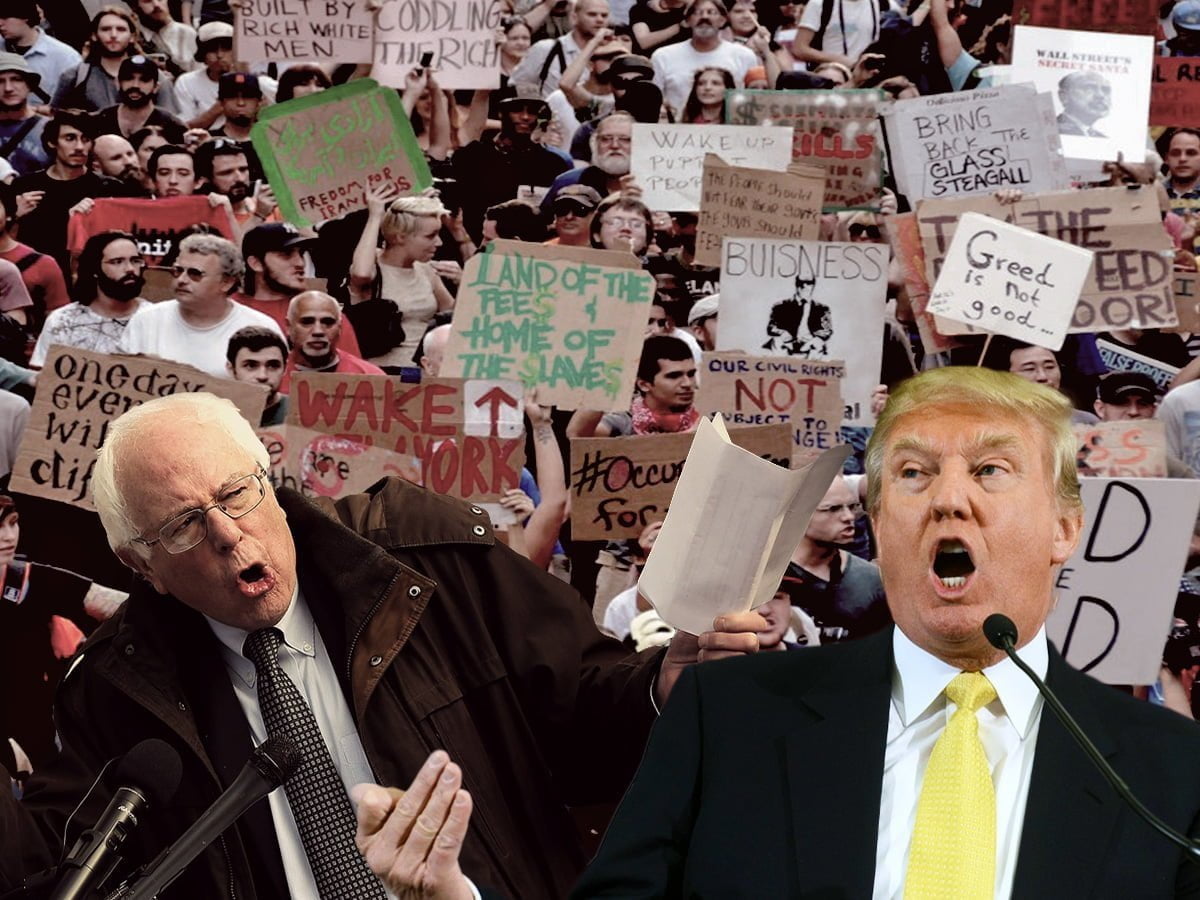 Many on the left in Europe had swallowed the idea that the American people were reactionary, right-wing and would never support socialism. That is completely untrue. There was a poll taken even before the Sanders campaign had got going asking young people under 30 years of age, “Would you vote for a socialist President?” 69% said yes (see this Gallup Poll).
Many on the left in Europe had swallowed the idea that the American people were reactionary, right-wing and would never support socialism. That is completely untrue. There was a poll taken even before the Sanders campaign had got going asking young people under 30 years of age, “Would you vote for a socialist President?” 69% said yes (see this Gallup Poll).
The same poll asked Americans above 65 years of age the same question and “only” 34% said yes. That result is even more incredible. After 100 years of vicious propaganda against socialism and communism, it represents a striking change in consciousness.
The change in consciousness is not confined to the lower reaches of society. In a peculiar, reactionary and distorted way Donald Trump reflected the anger of millions of working class people and others against the existing conditions and system, against what he calls the Establishment. Of course, the masses can only learn through experience. And experience will show – indeed is already showing – that this is nonsense. The scene will be prepared for big movements in the next period.
In fact these have already begun. Immediately after the election of Trump there were mass demonstrations in every city. The Women’s March was the largest single-day protest in American history. That was on the weekend he was inaugurated. And that was only the beginning of what is yet to come.
The reason why the ruling class hates Trump is because he has delivered a crippling blow to the already worn-out consensus that existed between Democrats and Republicans. Undermining that consensus could lead to very dangerous consequences, as seen in the recent government shutdown. The collapse of the so-called political centre reflects the widening abyss and sharp polarisation between the classes in US society. That has the most serious implications for the future.
Obama and the Democrats are responsible for the victory of Donald Trump. But Trump is himself deepening the process of social and political radicalization, preparing an even bigger swing to the left. In a serious condemnation of the two-party system, the latest polls show that a record 61% of Americans are opposed to both the Democrats and Republicans and believe a new major party is needed. Among the youth, the figure is 71%. This polarisation in the US – to both the left and the right – has produced the phenomenon of the sudden growth of the DSA, Democratic Socialists of America, a left group historically on the fringes of the Democratic Party.
Before the Sanders campaign this group had about 6,000 members: mainly old timers, imbued with a thoroughly reformist outlook. But since the election of Trump, DSA has ballooned to over 30,000 members, mostly youth looking for a socialist organisation. They have broken into many new areas where previously they had nothing and are developing a base on many campuses across the United States. There is now an internal debate on whether to break entirely with the Democrats. Some layers are developing very radical ideas and are wide open to the ideas of revolutionary Marxism. The future of this organisation has yet to be determined, but if it breaks with the Democrats and adopts a class-independent position, it has the potential to play an important role in the eventual creation of a mass socialist party in the US.
Canada and Quebec
Canada was not as hard hit by the 2008 crisis, as it had less of a housing bubble and the economy was propped up by resource exports to a booming China. Consequently, Canada has not felt the same degree of austerity as other OECD countries. However, the factors leading to stability are turning into their opposite. Cheap credit has fuelled debt and an explosion in the cost of housing. Household debt is at an unprecedented 171% of annual income and climbing. China is no longer pushing up oil and mineral prices to the same degree, while Trump’s protectionist threat to pull out of NAFTA threatens Canadian exports. A new global economic downturn would precipitate all these contradictions.
Quebec, however, has seen a period of intense class struggle, starting with the 2012 Quebec student strike. Unfortunately, due to a combination of ultra-leftism from a section of the student leadership, and opportunist capitulation by the union bureaucracy, the movement has subsided, but the active layers are searching for answers.
Quebec nationalism is in crisis. The Parti Quebecois has moved to the right and adopted a racist nationalism. The PQ has been in government and enacted austerity many times in the last 40 years, which explains why the youth see it as part of the establishment. The left nationalist Quebec Solidaire could act as a conduit for the discontent, but its petit bourgeois leadership is confused and makes many mistakes. Typically, when they focus on class issues they gain support, but when they focus on independence they become identified with the PQ.
There is no enthusiasm for new independence referenda amongst class conscious workers and youth. While we should not discount the possibility of the class anger of the masses expressing itself through a national independence movement, this seems to be an unlikely perspective for Quebec in the near-term.
China
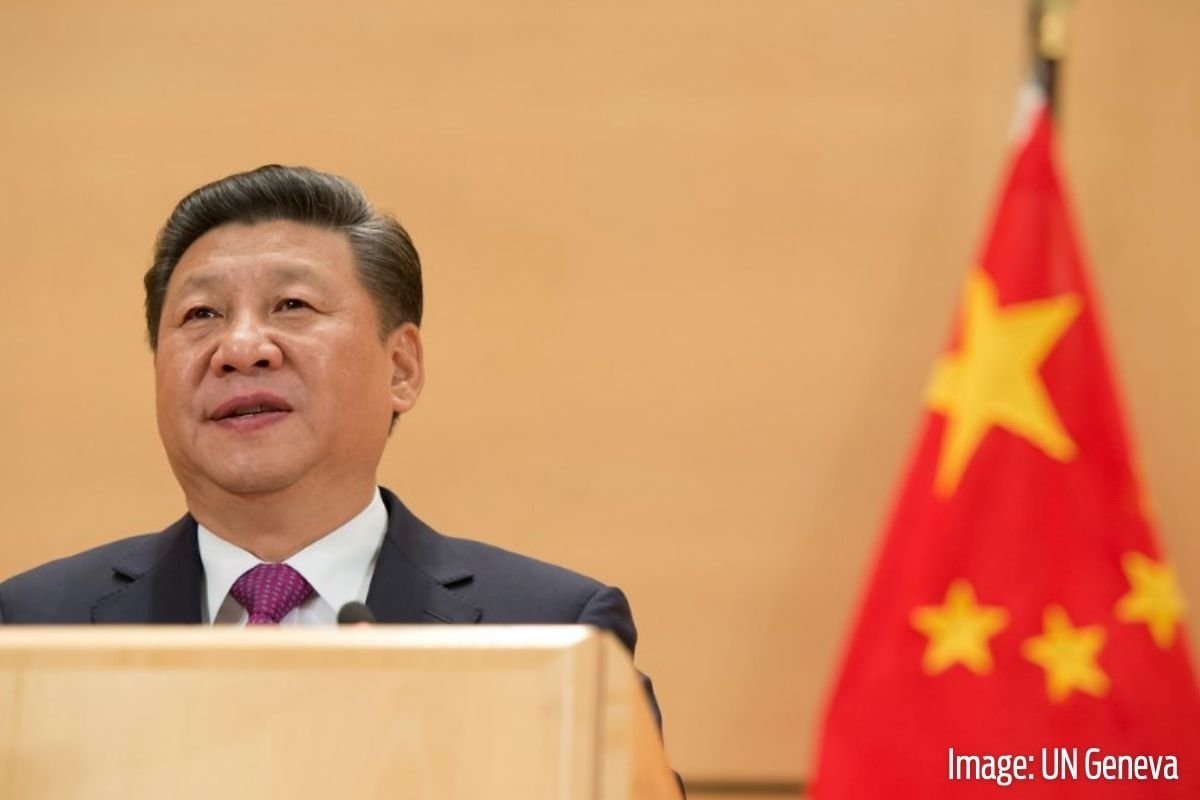 The Chinese economy has experienced a huge development of the productive forces in the last 40 years. That was one of the main things that kept the world economy from falling into a deep slump, keeping it afloat for 20 to 30 years. But now that has reached its limits. Growth in China has sharply decreased and is now less than 7%. That is very low by Chinese standards.
The Chinese economy has experienced a huge development of the productive forces in the last 40 years. That was one of the main things that kept the world economy from falling into a deep slump, keeping it afloat for 20 to 30 years. But now that has reached its limits. Growth in China has sharply decreased and is now less than 7%. That is very low by Chinese standards.
There are many unsolved contradictions in the Chinese economy. China’s manufacturing is heavily dependent on exports. In order to maintain the rate of growth China must export. If Europe and America are not consuming as they have in the past, China cannot produce as it did in the past because they need foreign markets to absorb their surplus product. And if China is not producing, then other countries like Brazil, Argentina and Australia cannot export their raw materials. Thus globalisation manifests itself as a global crisis of the capitalist system.
In the aftermath of the global financial crisis, China’s rulers were alarmed. They estimated they needed to sustain a minimum annual growth rate of 8% to prevent an accumulation of unrest that could threaten their rule. They resorted to Keynesian policies and launched an unprecedented plan of new public investment in infrastructure. They used the state-owned banking system to launch the greatest example of monetary easing in history, offering easy loans. But this creates new contradictions that threaten the future stability of China and the entire world.
As a result, Chinese government debt to GDP has doubled since 2008, at 46.2%, although it is still relatively low compared to that of the USA. However, total debt (the combined state, bank, business and household debt) has grown exponentially and threatens to spiral out of control. In absolute terms, China’s total debt ballooned from about $6 trillion at the time of the 2008 financial crisis to nearly $28 trillion by the end of 2016. As a percentage of GDP, total debt has risen from 140% to almost 260% over the same period. And the official figures undoubtedly understate the real situation.
It is likely that China’s total debt is nearer to 300% of GDP – and this estimate does not include the unregulated sector of shadow banking (estimated to be worth between 30 and 80% of GDP), which the World Bank in its October 2017 report on the East Asian and Pacific economies specifically warns is one of the greatest threats to regional prosperity.
The Chinese economy was undoubtedly saved in the short term by the government’s decision to open the credit floodgates, but that has resulted in an economy dependent on borrowing and afflicted with huge asset bubbles. The real test will come when Beijing eventually attempts to reduce this debt dependence. This can trigger a financial collapse, which the serious bourgeois economists fear would have a devastating effect on the world economy. Last year, the International Monetary Fund issued a warning about Beijing’s reluctance to rein in dangerous levels of debt.
At this moment in time a collapse of the Chinese finance system does not appear imminent. But neither did the crash of 2008 appear imminent…before it happened. It is true that because of the specific weight of the state sector, the Chinese government can exercise more control over both borrowers and lenders than would be possible in a normal market economy. It can order state-owned banks to keep lending to loss making companies or to smaller lenders that rely on short-term credit to stay liquid. As of the end of December 2017, China holds $3.14 trillion in foreign currency reserves, which can be used for “emergencies” – but even this will not save them forever.
This has allowed Beijing to delay problems much longer. But to delay a problem does not mean that it is solved. On the contrary, the longer the present unsound position is allowed to continue, the more violent and convulsive the crisis will be when it comes – and sooner or later, come it must. The slowing of the economy has led to a big increase in unemployment which is concealed by official figures, which do not include the millions of migrants who come from the countryside because they cannot find work. This will affect the political and social situation.
It is hard to know with precision what is happening in China. In a totalitarian state the news is strictly controlled. But there have been widespread strikes and demonstrations: the number of such “incidents” doubled every year between 2011 and 2015, and this was only the tip of the iceberg. The regime managed to halt the wave of strikes by putting pressure on companies not paying wages on time and by prosecuting enough cases of corruption to appear to some to be “on the side of the workers.”.
Under the apparent calm on the surface there is huge anger building up. The indignation of the masses is being stoked by injustice: the arbitrary actions of the bureaucracy with peasants having their lands stolen by corrupt officials, the destruction of the environment, with Beijing and other cities shrouded in toxic clouds, and above all the scandalous inequality that openly mocks the claim that China is a socialist country.
The Chinese workers could put up with these things as long as they felt that somehow things were advancing and the situation was getting better. But they are finding that this is no longer the case. The destiny of China depends on the future of the world market. China benefited from its participation in the world market, but now all the contradictions are coming back to hit them. An explosive situation is building up that can burst onto the surface without any warning.
World relations
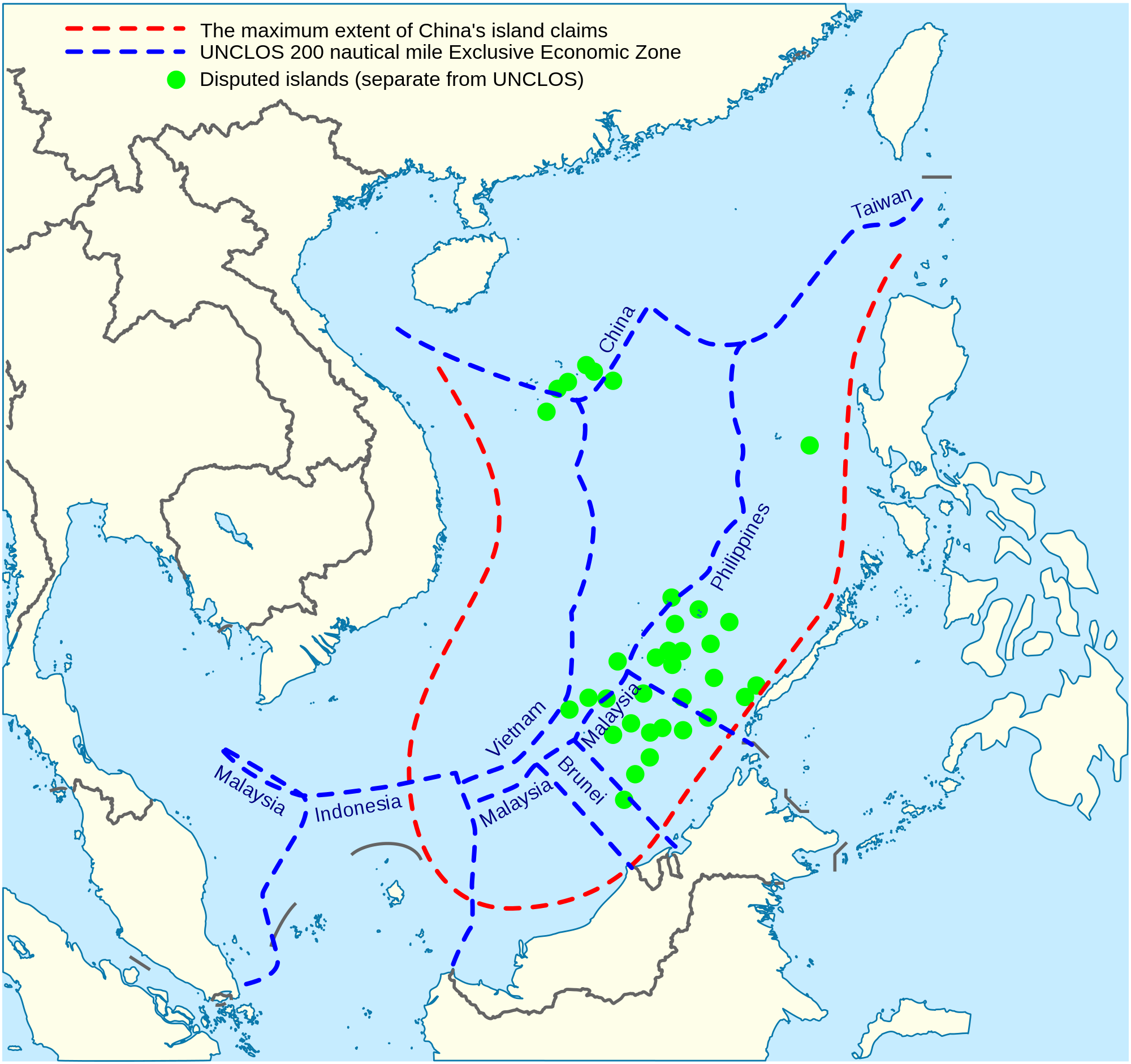 The conflict with North Korea glaringly exposed the limits of the power of American imperialism. Trump threatened it with total destruction, but all his threats had no effect in Pyongyang, other than to increase the bellicose noises and add to the growing number of nuclear tests and rockets flying over Japan, which Kim Jong-un claims can now reach any part of the United States.
The conflict with North Korea glaringly exposed the limits of the power of American imperialism. Trump threatened it with total destruction, but all his threats had no effect in Pyongyang, other than to increase the bellicose noises and add to the growing number of nuclear tests and rockets flying over Japan, which Kim Jong-un claims can now reach any part of the United States.
The US was considering installing a missile base in South Korea, which the Chinese adamantly oppose. Trump was compelled to eat his words and seek the support of Beijing to put pressure on Pyongyang. China has, in fact, been applying gentle pressure of its own on the North Korean regime to push it in the direction it desires, to rein it in in order to avoid a more open and dangerous conflict with the US. This is far from what Trump wants. But China’s bottom line on North Korea is that it is not going to allow a chaotic collapse of the regime.
All this has also exposed the inability of the US to do anything to protect its allies. Duterte, the Philippine “strongman” said that the US talks a lot but won’t do anything. He has drawn the necessary conclusion and dragged the Philippines towards China’s orbit. South Korea is now closer to China diplomatically, especially because of its historic tensions with Japan.
Thailand used to be one of the closest allies of the US, but it announced that it would buy submarines from China, which also implies cooperation with China. The plan was put on hold because of American pressure, but it seems it will go ahead. The 2014 coup in Thailand was condemned by the US, but praised by China. Vietnam and Malaysia have also forged closer economic ties to China, although relations between China and Vietnam are complicated by territorial conflicts, especially over China’s claims in the South China Sea.
China and America are engaged in a struggle for markets and influence. Many countries have China as their number one trading partner. It has stakes in two thirds of the 50 most important ports in the world. Its One Belt One Road project is the biggest diplomatic and financial project since the Marshall Plan.
The tensions between the two powers are at their sharpest in the region of the South China Sea, where the Chinese ruling class has developed its own version of the Monroe doctrine, meaning that it must have control over its own backyard. China’s provocative “island-building” projects are opposed by Washington, which has sent warships to assert what it calls the “freedom of the seas”.
Before the Second World War the tensions between the US and China would have already led to war. But nuclear-armed China is no longer the weak semi-colonial country of the past and there can be absolutely no question of America invading and enslaving China today.
The Middle East
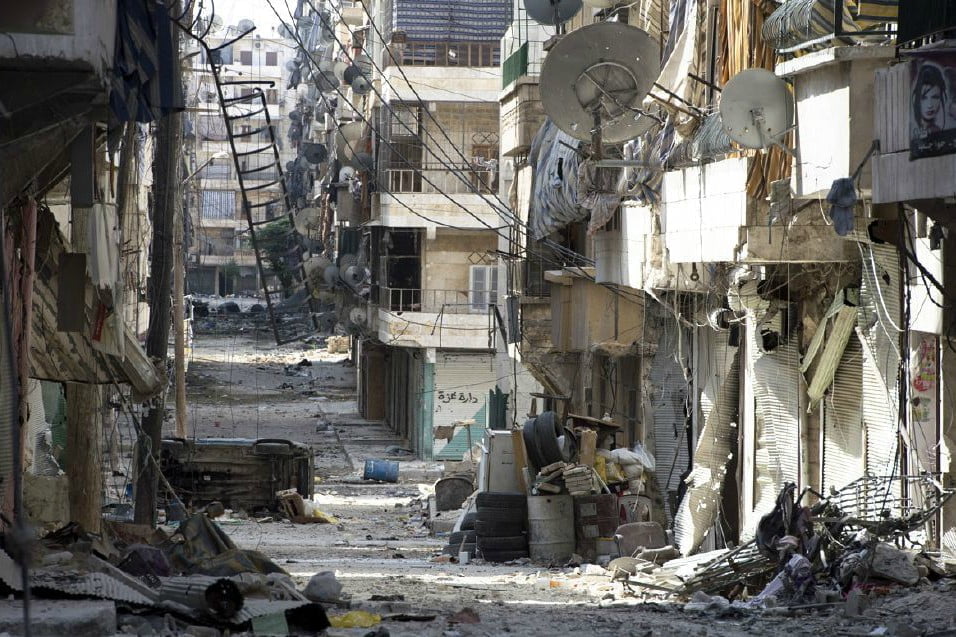 In the Middle East the contradictions of world capitalism are exposed in concentrated form. The crisis of world capitalism is also the crisis of US imperialism. When the ignorant and incompetent American imperialists stormed into Iraq and wrecked the whole country, they not only destroyed the lives of millions, but by destroying the Iraqi army they also disrupted the fragile equilibrium between the powers in the Middle East. All the subsequent crimes and monstrosities are ultimately due to this monstrous crime of imperialism.
In the Middle East the contradictions of world capitalism are exposed in concentrated form. The crisis of world capitalism is also the crisis of US imperialism. When the ignorant and incompetent American imperialists stormed into Iraq and wrecked the whole country, they not only destroyed the lives of millions, but by destroying the Iraqi army they also disrupted the fragile equilibrium between the powers in the Middle East. All the subsequent crimes and monstrosities are ultimately due to this monstrous crime of imperialism.
With the elimination of the Iraqi army, Iran’s influence grew rapidly to the detriment of the US and its traditional allies, in particular Saudi Arabia. The bloody conflict in Syria, which was really a proxy war between several foreign powers, was an attempt to claw back lost ground. It aimed at isolating Lebanon and taking Syria out of the Iranian sphere of influence. But today, Iran’s influence is stronger than ever in Syria or Lebanon.
In Syria the limits of the power of US imperialism are glaringly clear. The most powerful nation on earth is unable to intervene militarily in a decisive manner. This left a vacuum into which stepped Iran and Russia. The Russian intervention decisively tipped the balance in Assad’s favour. The fall of Aleppo marked a decisive turning point and a devastating and humiliating defeat – not just for the USA, but also for its allies, especially Saudi Arabia.
Now ISIS has been defeated in both Syria and Iraq. But the root problem has not been solved. What will happen now? The Turks are watching Raqqa, Mosul and even Kirkuk like hawks, waiting to grab what they can. The Iranians have increased their influence throughout the whole area, to the alarm of the Americans, Saudis and Israel. Meanwhile Iraq and Syria have fragmented and will remain unstable through the next period.
One section of the US ruling class wanted to continue the war, but this attempt was doomed to failure. Putin outmanoeuvred them at every step. When the Russians called a peace conference in Astana, Kazakhstan (a client state of Russia) the Americans and Europeans were not even invited. In the end, despite all the public rhetoric, the Americans were reluctantly obliged to accept the fait accompli dictated by Moscow.
The plain fact is that the US has been defeated in Syria. It reflects a shift in the balance of forces in the region. This will have far reaching consequences, in particular amongst Washington’s allies who have lost confidence in the US and have increasingly been following their own paths and interests. Turkey is supposed to be an ally of the United States and is a key member of NATO but increasingly, the Turks and the US have found themselves backing opposing forces in Syria.
Initially, the US placed its bets on the Turkish and Saudi backed Jihadi rebels, but these proved inefficient and – as became clear with the rise of ISIS – unreliable defenders of US interests. The Pentagon was therefore obliged to throw its weight behind the Kurdish YPG forces in the fight against ISIS in Northern Syria.
But there is a problem. Erdogan has big ambitions in the region. He wants an Ottoman-style empire and the Kurds form a physical and political obstacle for him. His main interest now is to crush the Kurds, both in Turkey and Syria. Defeated in Syria, Erdogan decided to change course, leaning on Iran and Russia in order to gain leverage to manoeuvre with the West.
In effect, by ditching the rebels in Aleppo and elsewhere, who are backed by the US, Saudi Arabia and other Gulf States, Russia and Iran allowed Turkey to take a slice of Northern Syria to stop the Kurdish forces from expanding their territory there. This cooperation of Turkey, Russia and Iran has dealt a shattering blow to the Americans and Saudis, whose Jihadi stooges have been crushed or forced to conform to the Astana deal.
Trump’s plan to undermine the Iran nuclear deal is a desperate attempt to turn the clock back. But whereas the US is under constant pressure to pull its forces out of the Middle East, Iran commands hundreds of thousands of battle hardened militiamen entrenched in Iraq, Syria and Lebanon. In the final analysis, that will be the decisive factor. The Europeans have disassociated themselves from Trump’s policy over Iran, which turns out to be more to the detriment of Washington than Teheran, which is enjoying the spectacle of disarray in the West.
Saudi Arabia
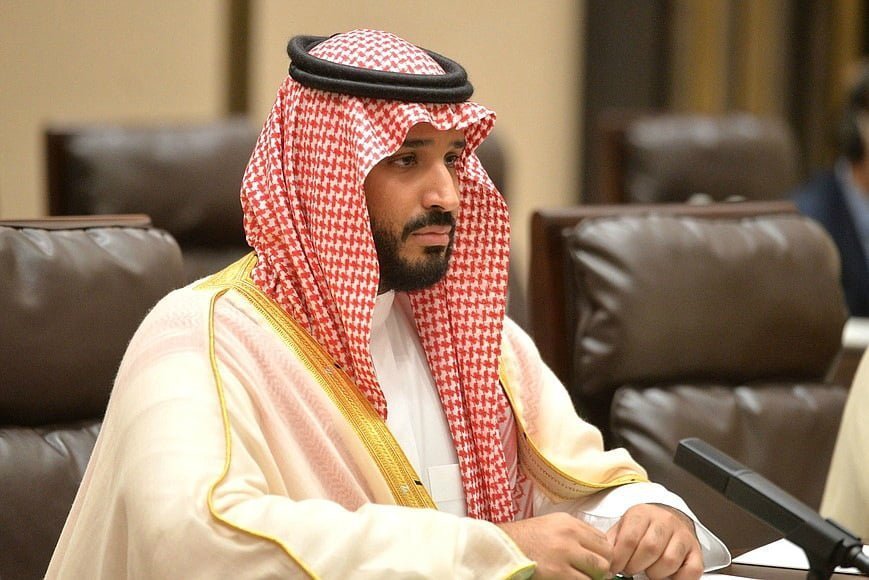 Saudi Arabia threw billions of dollars into the most reactionary groups in Syria. But it has lost. The Saudi war on Yemen is also failing. After almost three years of brutal fighting, which has wrecked the whole country and left millions facing starvation, the Iranian backed Houthis have a strong position in their areas. Meanwhile the Saudi coalition has all but fallen apart. The Jihadi, South-Yemen nationalist and Emirati troops composing the Saudi backed forces are all following their own agenda. This is yet another defeat which will further undermine foundations of the rotten Saudi regime.
Saudi Arabia threw billions of dollars into the most reactionary groups in Syria. But it has lost. The Saudi war on Yemen is also failing. After almost three years of brutal fighting, which has wrecked the whole country and left millions facing starvation, the Iranian backed Houthis have a strong position in their areas. Meanwhile the Saudi coalition has all but fallen apart. The Jihadi, South-Yemen nationalist and Emirati troops composing the Saudi backed forces are all following their own agenda. This is yet another defeat which will further undermine foundations of the rotten Saudi regime.
The Saudis tried to assert themselves in Qatar, by demanding that it cut its ties with Iran and Turkey and fall in line with Saudi foreign policy. But Qatar merely strengthened its trade and military ties with Iran and Turkey. Turkey has expanded its military base on the peninsula – a serious warning to the Al-Sauds not to go too far. Trump originally threw his weight behind the Saudis until he was quietly informed by his advisors that the US has a very important military base in Qatar.
The old king Abdullah was a hardened reactionary, but he was cunning and cautious. The new regime, led by upstart crown prince Muhammad Bin Salman, is anything but cautious. Like a losing gambler he is frantically indulging in risky bets to counter Iran’s expanding power and influence. But these efforts, far from halting the process of Saudi decline, are accelerating it and giving it an even more convulsive character.
For decades the life of this reactionary regime was artificially extended by imperialism due to the particular role it played as a main supplier of oil for the US and as the main base of counter-revolution in the Muslim world. Coupled with the high oil prices, the regime could maintain itself by buying off the reactionary tribal and religious layers that form its base.
But today these factors are disappearing. The US has become close to self-sufficient in oil and the world economic crisis has led to low oil prices. The role of the Kingdom in world relations has declined and thus the interests of Saudi Arabia and the US ruling class have begun to diverge. The crisis is also eating into Saudi reserves, forcing them to implement austerity for the first time ever. They can no longer buy social stability by bribing the local population with lavish subsidies and guaranteed jobs in the public sector.
In the medium term all these factors will combine to undermine the stability of the regime, which can fall like a rotten apple when least expected. Whatever replaces it will not be to the liking of Washington. Under the impact of the crisis of US imperialism, the old order in the region that was set up by British and US imperialism is unravelling.
As if all this were not more than sufficient, the brazen stupidity of Trump in recognizing Jerusalem as the capital of Israel and approving the moving the US embassy from Tel Aviv was aimed at a US audience, but it has added a new element of explosive instability for the Middle East. It has also caused further divisions between the European and American imperialists. The former fear the consequences for the so-called peace talks, which in any case nobody took seriously, if they ever did. The latter, as usual, understood nothing and foresaw nothing.
However, it seems unthinkable that Trump could have taken that decision without the knowledge and tacit consent of the Saudi leaders. They are now firmly aligned with Trump and the Israelis and are mainly concerned with confronting Iran. They will have agreed to stab the Palestinians in the back while making a few obligatory noises in order to play to the Arab gallery. That will eventually prove to be one more nail in the coffin of the corrupt and despicable Saudi regime.
Revolution in the Middle East and North Africa
The revolution, which swept through the region in 2011-2013, failed because it lacked a revolutionary leadership. Today the general movement, tired and confused, has retreated and left room for reaction to manoeuvre. The rise of reaction and Islamist counter-revolution throughout the region is connected to the ebb in the revolutionary movement.
However, the events of 2017 in Morocco show that the revolution is not dead. The uprising in the Rif was the most spectacular movement in Morocco since the 2011 Revolution in the Middle East and North Africa. The immediate incident that launched the uprising was the killing by the police of a young fishmonger in a rubbish truck. Once it began, this movement unfolded with incredible speed and intensity. A nationwide solidarity movement of the working class and the oppressed layers sprang into life with its own demands, which were neither nationalist nor sectarian.
This movement anticipates developments in the rest of the region, where not a single stable regime exists. All of the regimes in the region are weak and fighting for their survival. They cannot solve any of the problems of the masses who in turn are under enormous pressure. Sooner or later the movement will revive on an even higher level.
World war?
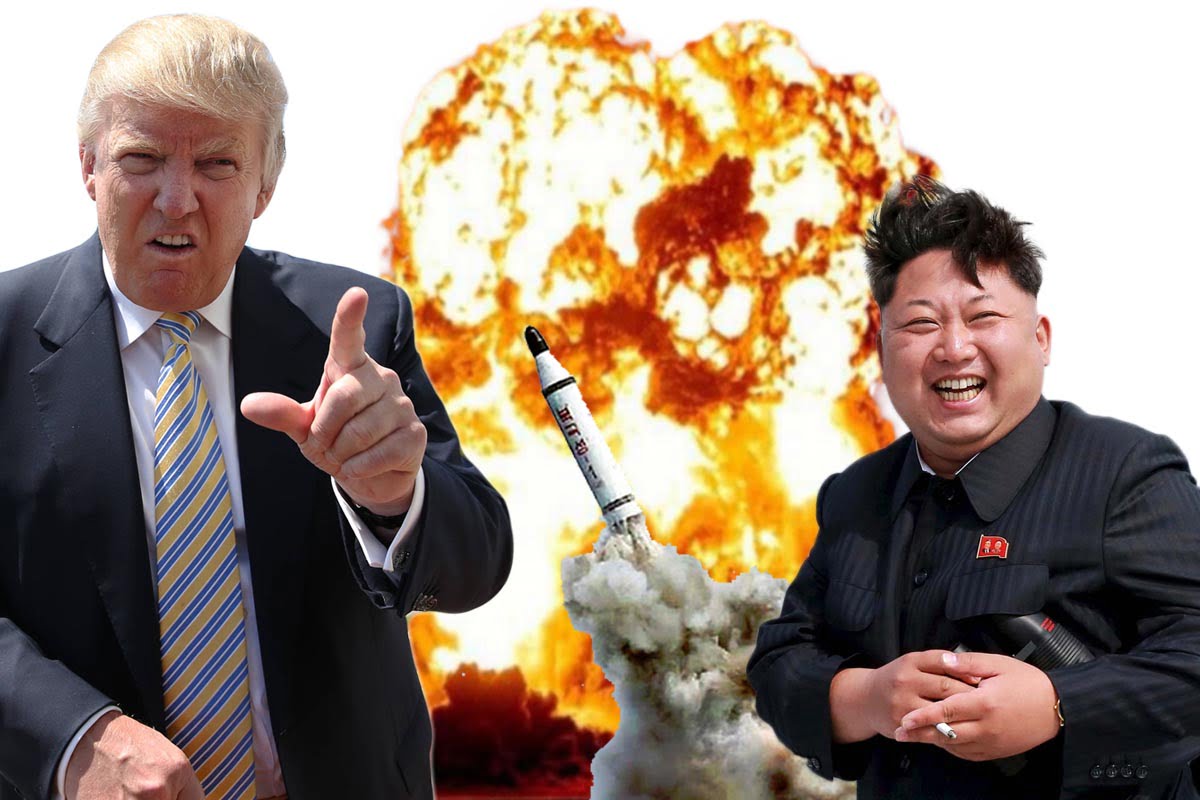 The crisis over North Korea’s nuclear programme caused a lot of talk of a world war. But this is premature to say the least. Under modern conditions world war is practically ruled out by the class balance of forces on a world scale. The imperialists do not make war for arbitrary reasons. The bourgeoisie resorts to war in order to conquer markets and spheres of influence. But war is a very costly and risky business. And with nuclear weapons the risks are multiplied a thousand fold. That is why the USA, the most formidable military power that has ever existed, has been unable to declare war on tiny North Korea.
The crisis over North Korea’s nuclear programme caused a lot of talk of a world war. But this is premature to say the least. Under modern conditions world war is practically ruled out by the class balance of forces on a world scale. The imperialists do not make war for arbitrary reasons. The bourgeoisie resorts to war in order to conquer markets and spheres of influence. But war is a very costly and risky business. And with nuclear weapons the risks are multiplied a thousand fold. That is why the USA, the most formidable military power that has ever existed, has been unable to declare war on tiny North Korea.
Russia is not militarily as strong as America, but it is a very powerful military state. And it is far stronger militarily than British, French or German imperialism, both in conventional and nuclear terms. The West could do nothing to prevent it taking over Crimea (where the majority are Russians anyway). Nor could it do anything to prevent Russia from intervening to save the Assad regime in Syria. These two cases reveal the limitations of US imperialism’s power.
Last year NATO sent a few thousand troops to Poland as a warning to Russia. That was just a joke. The Russians replied by holding the biggest ever military manoeuvres together with Belarus on the very border of Poland. That was a little warning to NATO. From a military point of view, compared with Russia, Britain nowadays is almost insignificant, France is not much more, Germany is nothing at all.
Above all, the international class balance of forces is a serious barrier to the launching of a major war. It should be remembered that before the Second World War could take place, the working class had to first suffer a whole series of crushing defeats in Hungary, Italy, Germany, Spain… But now the forces of the working class are intact. The working class has not suffered any serious defeats in the advanced capitalist countries.
In the USA the people are tired of military adventures. US imperialism burned its fingers badly in Iraq and Afghanistan. It cost them an enormous amount of blood and treasure without achieving anything. As a result, Obama was not even able to order a military intervention in Syria. He tried but he saw that it would have provoked a massive popular revolt. He had to back down. The same was true of Cameron’s Conservative government in Britain.
There cannot be a world war at least for the foreseeable future, unless a totalitarian regime came to power in the US on the basis of a crushing defeat of the American working class. That would be a qualitatively different balance of forces. But that is not the position in the immediate future. On the contrary, for a whole period the pendulum will swing to the left.
Trump is a reactionary bourgeois politician, but contrary to the demagogic assertions of some on the Left, he is not a fascist and does not stand at the head of a totalitarian state like that of Hitler. On the contrary, he does not control the state at all: it is at war with him. He does not even have total control of Congress, although it is dominated by the Republican Party. In fact, his hold on power is extremely tenuous. The Strong Man in the White House has feet of clay.
Although a war on the lines of 1914-18 and 1939-45 is ruled out under present conditions, there will be constant small wars all the time which under modern conditions are frightful enough. Iraq was a small war. Syria was a small war. The civil war in the Congo cost the lives of at least five million people and did not even make the front pages of the newspapers. This kind of thing will occur again an again. Meanwhile, the spread of terrorism means that this barbarism is beginning to affect “civilised” Europe. This is what Lenin meant when he said that capitalism is horror without end.

